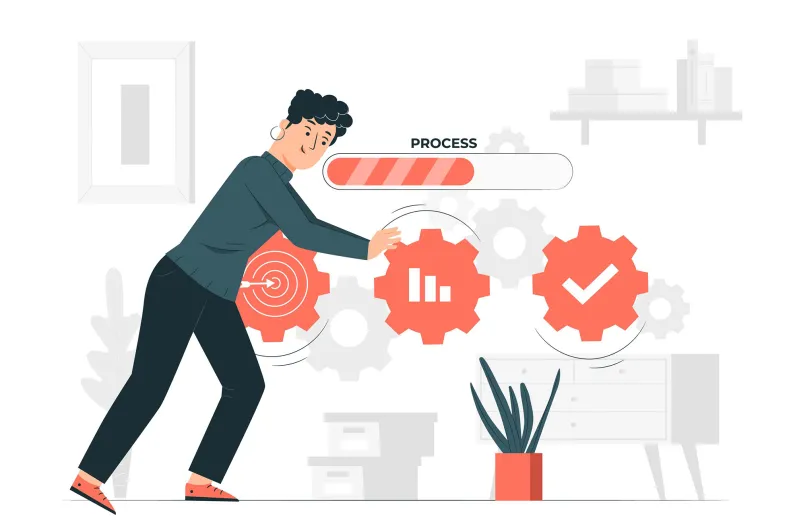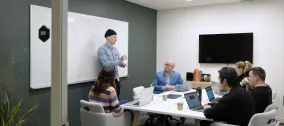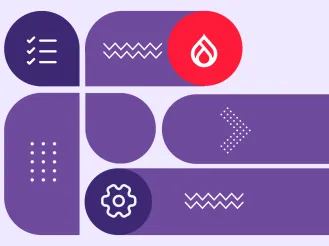To Improve Your Website’s UX, Marry Content to Design From Day One
If your current website is no longer meeting your company’s needs, investing in a website rebuild or redesign is a smart move. But before you start overhauling your site’s look and feel, it’s critical to take a step back and consider your audience.
What are your users looking for? How will your design cut through the digital noise and capture your audience’s attention? And if “content is king,” how do you give users the practical information they need while creating a design that’s modern and inviting?
It can be challenging to strike the right balance between form and function. After all, even the most dazzling designs can result in a user experience that ultimately falls flat if it’s not built around helpful, user-focused information. On the flip side, too much content — especially too much of the wrong content — can bog your users down and distract them from finding answers to their questions.
The solution to this conundrum is to adopt an approach that takes both content and design into consideration from the outset.
5 Ways to Implement a Content-Driven Web Design
So how do you design a content-driven website that draws your audience in? Take five foundational steps before you write a single word or consider a single design theme.
1. Start With a Blank Slate and Think About Your Audience
The best way to begin a new web design project is to stop looking at your old site. Yes, you need to know what your current site contains and understand what works and what doesn’t. And there may be elements you want to bring forward from your previous design. But in general, preconceived notions hold you back from achieving the results you’re looking for. So first and foremost, commit to kicking off your website development project with a clean slate.
We recommend starting with a discovery and preparation phase to:
- Get to the heart of your organization’s business goals.
- Align internal stakeholders around the purpose of your website.
- Spell out what success will look like.
- Define and prioritize audience segments and personas.
- Uncover your users’ wants and needs.
- Coalesce around the organizational stories you want to tell.
- Establish a vision for your project that takes your business goals and your audience into account.
Knowing what you’re trying to achieve — and what your audience needs from you — is foundational to developing an effective content and design strategy.
2. Conduct User Testing to Map Out User Journeys and Calls to Action
Each page of your website should serve a specific purpose, much like each room in your house serves a different function. Creating the right content and design for each page is critical to leading visitors through your site and getting them to take the actions you want them to take.
Your homepage is like your home’s front door, where many visitors will start their journey. But visitors might arrive through a back or side door (e.g. on landing pages via paid or organic search) as well.
These pages become the springboards that enable your audience to go where they need to go next. As such, they should be media-rich, visually appealing, and lighter on content. Using images, videos, microcopy, and pull quotes are great ways to tell good stories, capture your audience’s attention, and help them find their ideal path. Then, as users proceed on their journey, they should find pages that contain more in-depth content to meet their needs.
But how do you map out your users’ varied journeys? You can’t do it in a vacuum. To meet users where they are and create pathways that drive visitors toward action, you need to know what your visitors actually want.
That's where user testing and research come in. By talking to your audience and using quantitative research tools like Google Analytics and Hotjar heatmaps, you can figure out what users are looking for and design the right content for them.

3. Be Realistic About Your Content (And Your Internal Capabilities)
You might already have ideas about how you want your homepage, product and services pages, and other key parts of your website to look. However, before you start designing, it’s crucial to ask questions like:
- Do we have the content we need to populate this page? If not, do we have the bandwidth to create it?
- How long or short should the content be?
- Is our content strategy based on users’ needs rather than our internal stakeholders’ preferences?
- Will this design be attractive to users?
- Is this design something we can maintain and keep up with over time?
For your web design to truly be content-driven, it needs to be realistic. That means designing with real content, not with lorem ipsum. And it also means designing a solution that is sustainable for the internal stakeholders who will need to keep your design looking good down the road. No matter how beautiful your design is, if your internal team can’t keep up with it, it won’t serve you or your audience.
4. Prioritize Website Accessibility
Since embracing a content-driven web design strategy is all about improving your UX, it’s also smart to look at it through the lens of accessibility. Why? Accessibility is about providing a stellar user experience to your entire audience and removing any barriers that keep them from progressing on their journey. And again, doing that requires you to think about your content and your design in tandem.
For example, content that’s created with accessibility in mind focuses on readability and scannability, which requires the use of frequent subheadings and chunks of content. This, in turn, informs the design’s structure. Likewise, accessible navigation requires the use of clearly labeled buttons and links so users don’t get lost. This, in turn, informs the content structure and wording.
Again, content and design are two sides of the same coin. They operate together to provide an accessible, positive user experience for your audience.
5. Embrace Mobile-First Design Principles
In our digital-first world, the majority of your users will access your site via mobile devices and tablets. And when they do so, your design should be friendly for that format. After all, when your users visit your site using their phone or tablet, they don’t want to scroll forever. Starting with a mobile-first approach gives you a realistic perspective on your audience’s capacity for content consumption. Considering the mobile experience will help you keep content to an optimal length while ensuring it’s also engaging and easy to navigate.
Designing from a mobile-first perspective is a helpful exercise anytime you develop new content — even apart from a website rebuild or redesign. That’s because what looks fantastic on a big desktop screen can become a frustrating maze or a lengthy dissertation on a tiny mobile device. But by designing for mobile-first, you can consider the most constrained use case first and tailor your content accordingly.

Embrace Content-Driven Web Design to Give Your Audience the User Experience They Expect
In a noisy digital landscape, adopting an authentic, user-centric web strategy is key to reaching your audience and compelling them toward action. So if it’s time to embark on a digital transformation at your organization, don’t think about your content strategy and website design separately. Consider how they can work together to fulfill your website’s ultimate objective — communicating effectively with your audience.
But if you’re feeling overwhelmed by the task ahead of you, remember: You don’t have to figure it all out alone. We’d love to help — just reach out.







